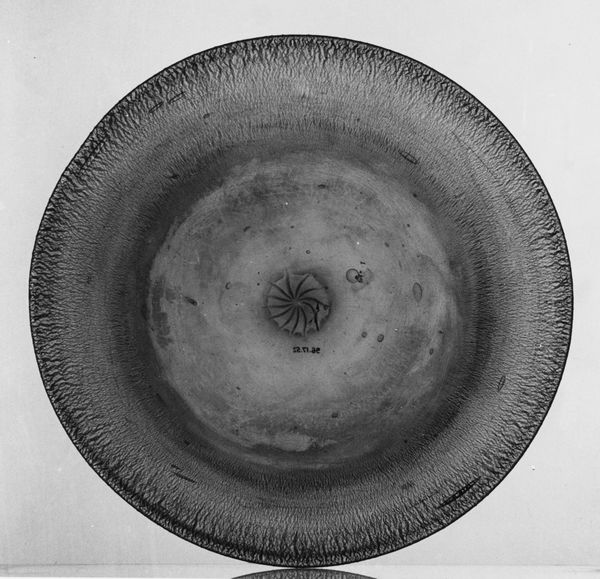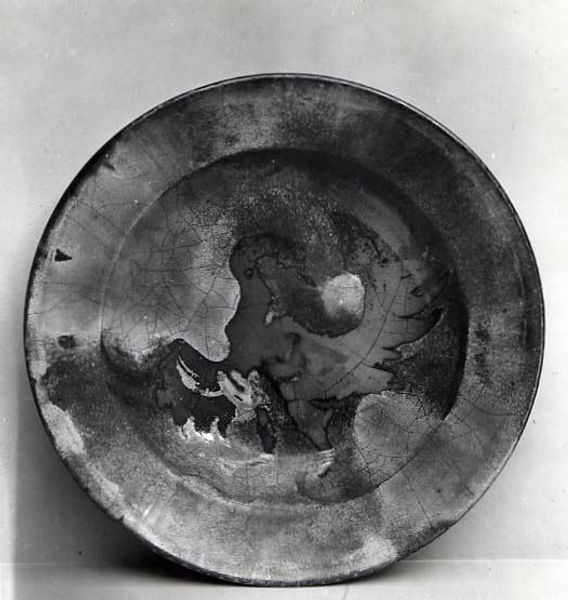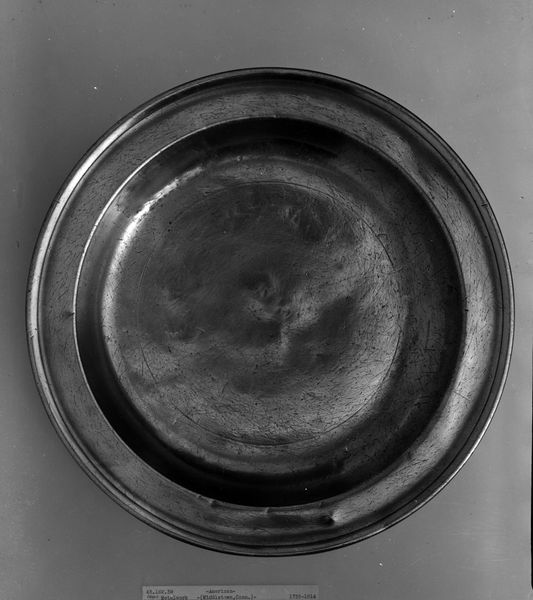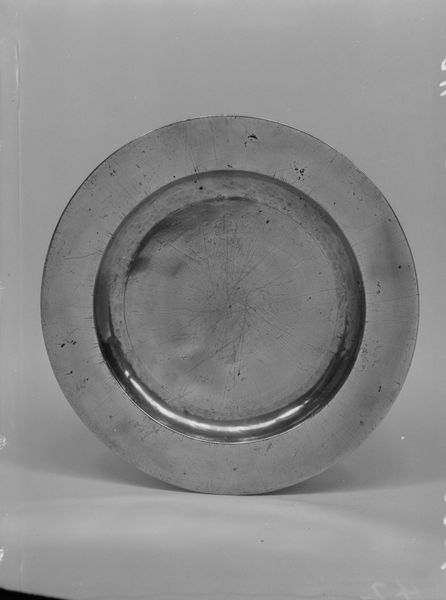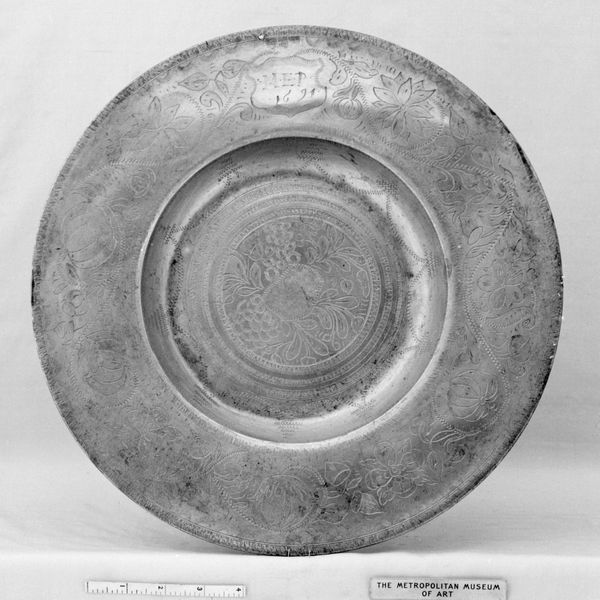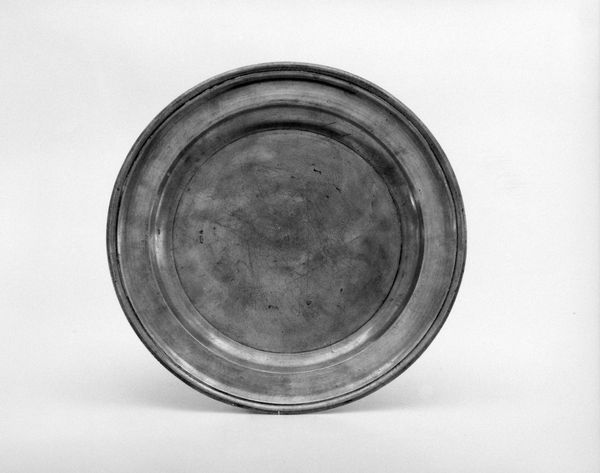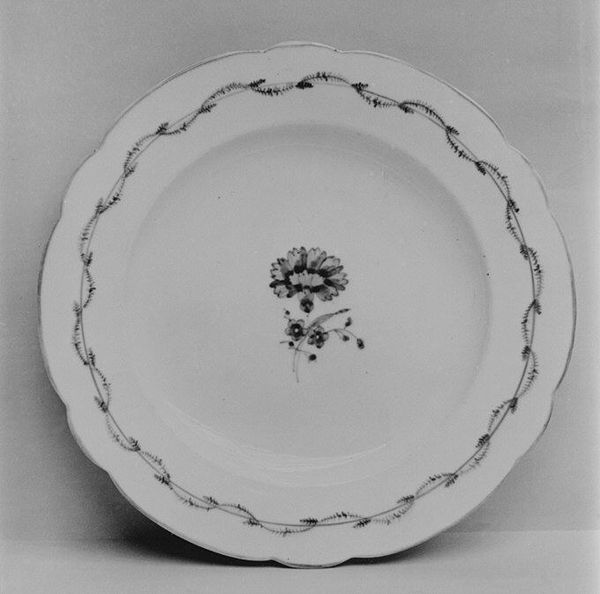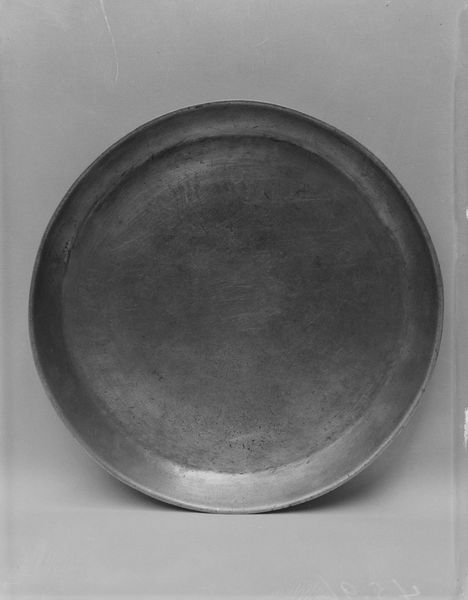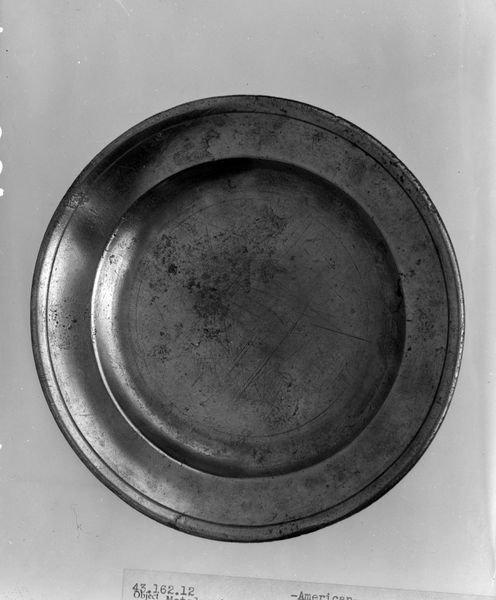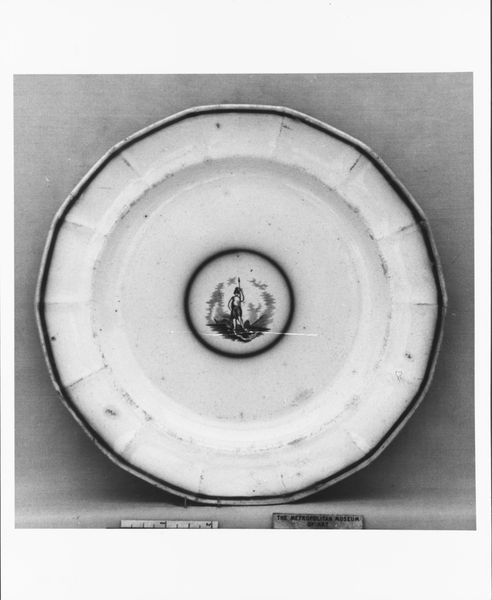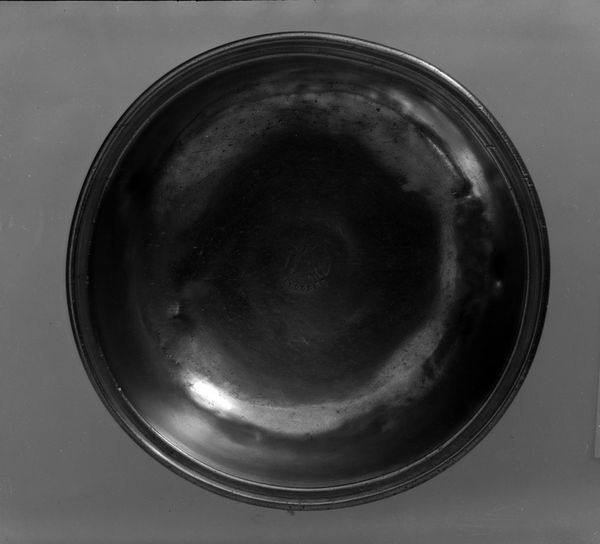
ceramic, porcelain
#
ceramic
#
porcelain
#
decorative-art
Dimensions: Diam. 7-3/8 inches (18.7 cm.)
Copyright: Public Domain
Editor: So, here we have Félix Bracquemond's "Plate," created sometime between 1872 and 1880. It's a porcelain piece of decorative art now residing at the Metropolitan Museum. I’m struck by the understated elegance of the swirling pattern; it seems almost like a restrained Art Nouveau design. How would you interpret the role of a piece like this within the art world of its time? Curator: It's vital to consider how Japonisme deeply influenced decorative arts during this period. Bracquemond was a key figure in popularizing Japanese aesthetics in France. We must ask: was this plate merely decorative, or did it serve as a means to elevate and disseminate non-Western artistic traditions, challenging existing academic hierarchies? How might mass production and consumption of such items also reinforce or subvert social structures? Editor: That’s a fascinating point. It highlights the tension between artistic appreciation and potential cultural appropriation, doesn’t it? Do you see any evidence of the impact that museums or art institutions had on promoting this piece and Japonisme generally? Curator: Absolutely. Museums became crucial sites for exhibiting Japanese art and objects, lending them legitimacy and introducing them to a wider audience. But it's not just about the aesthetic. Institutions also became entangled with colonial narratives and power dynamics. Consider, for example, the narratives constructed around the object—did it celebrate cultural exchange, or did it perpetuate Orientalist stereotypes? This plate then becomes a document of this complex negotiation. Editor: It gives me a lot to think about, this object’s context. It shows how looking at an object's past can change what you see. Thanks for opening my eyes. Curator: The layers of cultural and social meaning are what make studying these objects rewarding. This object, seemingly so simple, truly allows insight to the institutional role in shaping taste.
Comments
No comments
Be the first to comment and join the conversation on the ultimate creative platform.

